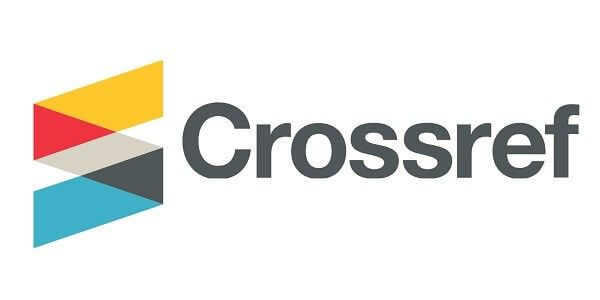Developing an Instrument to Assess Organizational Readiness for a Sustainable E-Learning in the New Normal
Keywords:
organizational readiness, instrument development, e-learning, online distance learning, assessment toolAbstract
E-learning is aptly a practical response to continuous learning given the surge in the use of information technology, and economic disruptions impinging on the schools. The need to shift to e-learning has been exacerbated by the COVID-19 pandemic. In this regard, we sought to develop an organizational assessment instrument to internally ascertain the level of readiness of the school for sustainable e- learning in the new normal. This assessment instrument was primarily developed for the use of the Mendiola Consortium member schools in their pursuit to conduct elearning. We intended that as an internal self-assessment it can diminish the threat of failure and provide some assurance of the successful implementation of e-learning. We noted that many survey instruments had been made to assess organizational readiness as a construct for e-learning. However, it revealed that these instruments have varying limitations in validity and reliability to establish the domains of organizational readiness for e-learning. We anchored our study on the organizational readiness model developed by Schreurs and Al-Huneidi (2012) and Mercado (2002). From our review of related literature, we were able to generate seven basic dimensions of our model, namely: teacher, student, curriculum, technology, administrative support, financial support, and learning environment. We used a mixed method of qualitative and quantitative approach to come up with a validated instrument. We conducted a three-phase approach in developing the instrument. The final instrument yielded 45 items to be rated on a five-point Likert scale. For its content validity, the Item-Content Validity Index ranged from 0.91 to 0.96, while the Scale-Content Validity Index was 0.94. It has a Cronbach alpha of .975 for its reliability.
References
Alok , Kumar (2011). Student Evaluation of Teaching: An Instrument and a Development Process. International Journal of Teaching and Learning in Higher Education, 23(2), 226-235. http://www.isetl.org/ijtlhe/
Aldowah, H., Ghazal, S., & Muniandy, B. (2015). Issues and challenges of using e-learning in a Yemeni Public University. Indian Journal of Science and Technology, 8(32), 1-9. https://doi.org/10.17485/ijst/2015/v8i32/92160
Al-Fadhli, S. (2008). Students’ perceptions of e-learning in Arab Society: Kuwait University as a case study. E-Learning, 5(4), 418-428. https://doi.org/10.2304/elea.2008.5.4.418
Al-Hunaiyyan, A., Al-Huwail, N., & Al-Sharhan, S., (2008). Blended learning design: Discussion of cultural issues. International Journal of Cyber Society and Education, 1, 17-32.
Aronen, R., & Dierssen, G. (2001). Improving equipment reliability through e-learning. Hydrocarbon Processing, 80(9), 47-60.
Brown, J.D. (2009a). Statistics Corner. Questions and answers about testing statistics: Principal components analysis and exploratory
factor analysis-Definitions, differences, and choices. Shiken: JALT Testing & Evaluation SIG Newsletter. 13(1), 26-30. Also retrieved from www at http://jalt.org/test/bro_29.htm
Brown, J.D. (2009b). Statistics Corner. Questions and answers about testing statistics: Choosing the Right Type of Rotation in PCA and EFA. Shiken: JALT Testing & Evaluation SIG Newsletter. 13(2), 19-23. Also retrieved from www at http://jalt.org/test/bro_30.htm
Chapnick, S. (2000). Are you ready for e-learning? Learning Circuits: ASTD’s Online Magazine All About E-Learning. Retrieved May 21, 2011, from, http://www.astd.org/LC/2000/1100_chapnick.htm
Coakes ,S.J (2013). SPSS: Analysis without Anguish : Version 20 for Windows .retrieved from https://www.worldcat.org/title/spssanalysis-without-anguish-version-20-for-windows/oclc/795333279.
Creswell, J.W (2009). Research design: Qualitative, quantitative, and mixed method approaches. (3rd ed.). Sage Publications.
Comeaux, P., & McKenna-Byington, E. (2003). Computer-mediated communication in online and conventional classrooms: Some implications for instructional design and professional development programmes. Innovations in Education and Teaching International, 40(4), 348-355. https://doi.org/10.1080/1470329032000128387
Coppola, N. W., Hiltz, S. R., & Rotter, N. G. (2002). Becoming a virtual professor: Pedagogical roles and asynchronous learning networks. Journal of Management Information Systems, 18(4):169-190. https://doi.org/10.1080/07421222.2002.11045703
Dancey,C. & Reidy,J. (2017). Statistics without Math for Psychology, 7th Ed. University of East London. Pearson.
Dray, B.J., Lowenthal,P.R., Miszkiewicz, M.J., Ruiz-Primo, M.A, and Marczynski, K. (2011). Developing an instrument to assess student readiness for online learning: a validation study. Distance Education, Vol.32., No.1,29-47. https://doi.org/10.1080/01587919.2011.565496
El-Seoud, S., Taj-Eddin, I., Seddiek, N., El-Khouly, M., Nosseir, A. (2014). E-Learning and Students’ Motivation: A Research Study on the Effect of E-Learning on Higher Education https://www.researchgate.net/publication/264417866_ELearning_and_Students'_Motivation_AResearch_Study_on_the_Effect_of_ELearning_
on_Higher_Education
Eom, S., Wen, H. J. & Ashill, N. (2006). The determinants of students' perceived learning outcomes and satisfaction in university online education: An empirical investigation. Decision Sciences Journal of Innovative Education, 4(2), 215-235. https://doi.org/10.1111/j.1540-4609.2006.00114.x
Fetaji, B., & Fetaji, M. E-learning indicators: A multi-dimensional modelfor planning and evaluating e-Learning software solutions. Electronic Journal of e-Learning, 7(1), 1-28. https://files.eric.ed.gov/fulltext/EJ867099.pdf
Goh, C. F., Leong, C. H., Kasmin, K., Hii, P. K. &Tan, O. K. (2017). Student’ Experiences, Learning Outcomes and Satisfaction in Elearning,13, https://www.researchgate.net/publication/317229104_Students'_Experiences_Learning_Outcomes_and_Satisfaction_in_e-Learning
Hameed, N., Shaikh, M. U., Hameed, F., & Shamim, A. (2016). Cultural differences in e-learning: Exploring new dimensions. https://arxiv.org/abs/1607.01359
Hammond, H., Coplan, M., & Mandernach, B. J. (2018). Administrative considerations impacting the quality of online teaching. Online Journal of Distance Learning Administration, 21(4). https://www.westga.edu/~distance/ojdla/winter214/hammond_coplan_mandernach214.html
Haney, By. (2002). Assessing organizational readiness for E‐learning: 70 questions to ask. Performance Improvement, 41(4), 10-15. https://doi.org/10.1002/pfi.4140410404
Hilliard, A. T. (2015). Global blended learning practices for teaching and learning, leadership, and professional development. Journal of International Education Research, 11(3), 179-188. https://doi.org/10.19030/jier.v11i3.9369
Holt, D., & Challis, D. (2007). From policy to practice: One university’s experience of implementing strategic change through wholly online teaching and learning. Australasian Journal of Educational Technology, 23(1). https://doi.org/10.14742/ajet.1276
Hrastinski, S. (2008). Asynchronous and synchronous e-learning, Educause Quarterly, 31(4), 51-55. https://er.educause.edu/media/files/article-downloads/eqm0848.pdf
Hussein, Z. (2016). Leading to Intention: The Role of Attitude in Relation to Technology Acceptance Model in E-Learning https://www.sciencedirect.com/science/article/pii/S1877050917302181
Journell, W. (2012). Walk, don't run — to online learning. The Phi Delta Kappan, 93(7), 46-50. http://www.jstor.org/stable/23210004
Kearsley, G. (2008). Preparing engineering faculty to teach online. Educational Technology, 48(5), 28-33. https://www.jstor.org/stable/44429605
Kearsley, G. & Blomey, R. (2004) Preparing K-12 teachers to teach online. Educational Technology, 44(1), 49-52. https://www.jstor.org/stable/44428876
Keengwe, J., & Kidd, T. (2010). Towards best practices in online learning and teaching in higher education. MERLOT Journal of Online Learning and Teaching, 6(2), 533-541. https://jolt.merlot.org/vol6no2/keengwe_0610.pdf
Kenzig, M. (2015). Lost in translation: Adapting a face-to-face course into an online learning experience. Health Promotion Practice, 16(5), 625-628. https://doi.org/10.1177/1524839915588295
Li-An Ho, (2009) The antecedents of e-learning outcome: An examination of system quality, technology readiness and learning behavior. Department of Educational Technology, 44(175), 581-599.
Makarenko, E., & Andrews, J. (2017). An empirical review of the mental health and well-being of online instructors. The Journal of Educational Thought (JET) / Revue De La Pensée Éducative, 50(2&3), 182-199. https://doi.org/10.11575/jet.v50i2&3.44321
Marek, K. (2009). Learning to teach online: creating a culture of support for faculty. Journal of Education for Library and Information Science, 50(4), 275-292. http://www.jstor.org/stable/40732589
Masoumi, D. (2006). Critical factors for effective e-learning. Retrieved from: https://www.researchgate.net/publication/237556479.
McLoughlin, C. & Oliver, R. (2000). Designing learning environments for cultural inclusivity: A case study of indigenous online learning at tertiary level. Australasian Journal of Educational Technology, 16(1), 58-72. https://doi.org/10.14742/ajet.1822
McQuiggan, C. (2007). The role of faculty development in online teaching’s potential to question teaching beliefs and assumptions. Online Journal of Distance Learning Administration, 10(3). https://eric.ed.gov/?id=EJ1065614
Mercado, C. A. (2008). Readiness Assessment Tool for an eLearning environment implementation. Paper presented at the Fifth International Conference on eLearning for Knowledge-Based Society, Bangkok.
Meyer, J. & Barefield, A. (2010) Infrastructure and Administrative Support for Online Programs. Online Journal of Distance Learning Administration, 13(3). https://www2.westga.edu/ ~distance/ojdla/Fall133/meyer_barfield133.html.
Mohammed, P., & Mohan, P. (2011). Integrating culture into digital learning environments: Studies using cultural educational games. Caribbean Teaching Scholar, 1(1), 21-33. https://journals.sta.uwi.edu/ojs/index.php/cts/article/view/3
Mulwa, A. S., & Kyalo, D. N. (2011). Mulwa, A. (2012). The influence of ICT infrastructure on readiness to adopt e-learning in secondary schools in Kitui District, Kenya. http://erepository.uonbi.ac.ke/handle/11295/10287.
Olufunmilola, O., Olafare, F. O. & Sakaba, D. (2016). Individual and technological factors affecting undergraduates’ use of mobile technology in University of Ilorin, Nigeria. Digital Education Review, 29, 124-133.
Piña, A. (2017). An organizational development framework for assessing readiness and capacity for expanding online education. Online Journal of Distance Learning Administration, 20(3). https://www.westga.edu/~distance/ojdla/fall203/pina203.html
Rogers, D. L. (2000). A paradigm shift: Technology integration for higher education in the new millennium. AACE Journal, 1(13), 19-33.
Ruth, S. (2006). E-learning: A financial and strategic perspective. Educause Quarterly, 1, 22-30.https://er.educause.edu/media/files/article-downloads/eqm0615.pdf
Salac, R. A., & Kim, Y. S. (2016). A study on the internet connectivity in the Philippines. Asia Pacific Journal of Business Review, 1(1), 67-88. https://doi.org/10.20522/APJBR.2016.1.1.67
Santagata, R., & Sandholtz, J. H. (2019). Preservice Teachers’ Mathematics Teaching Competence: Comparing Performance on Two Measures. Journal of Teacher Education, 70(5), 472–484. https://doi.org/10.1177/0022487117753575
Saunders, B. & Quirke, P. (2002). Let my laptop lead the way: A Middle Eastern study. Educational Technology and Society, 5(1), 1436-4522.
Saunders, M.N.K., Lewis, P. & Thornhill, A. (2019). Research methods for business (8th ed.). Pearson Education.
Schreurs, J., & Al-Huneidi, A. M. (2012). E-Learning readiness in organizations: Case KBC Bank. International Journal of Advanced Corporate Learning (iJAC), 5(1), 4-7. https://dx.doi.org/10.3991/ijac.v5i1.1885
Shea, P., Pickett, A., & Li, C. S. (2005). Increasing Access to Higher Education: A study of the diffusion of online teaching among 913 college faculty. International Review of Research in Open and Distance Learning, 6(2). https://doi.org/10.19173/irrodl.v6i2.238
Sife, A. S., Lwoga, E.T., & Sanga, C. (2007). New technologies for teaching and learning: Challenges for higher learning institutions in developing countries. International Journal of Education and Development using Information and Communication Technology (IJEDICT), 3(2), 57-67.
Soriano, G.P. (2020). Psychometric Properties of Spiritual Index of Well-Being Among Filipino Women with Breast Cancer. Belitung Nursing Journal, 6(5),177-181 https://belitungraya.org/BRP/index.php/bni/index
Sun, J., & Wang, Y. (2014). Tool choice for e-learning: Task-technology fit through media synchronicity. Information Systems Education Journal (ISEDJ), 12(4), 17-28. https://files.eric.ed.gov/fulltext/EJ1140775.pdf
Twigg, C. A. (2011). Innovations in online learning innovations in online learning moving beyond no significant difference. In the Pew Symposia in Learning and Technology, Phoenix Arizona. https://www.immagic.com/eLibrary/ARCHIVES/GENERAL/RPI_US/R011107T.pdf
Tubaishat, A., Bhatti A., & El-Qawasmeh E. (2006). ICT experiences in two different Middle Eastern Universities. Issues in Informing Science and Information Technology, 3. 667-678. https://doi.org/10.28945/3036
Tularan, G., Michisella, P. (2018). Traditional vs. Non-Traditional Teaching and Learning Strategies-the case of E-learning https://www.cimt.org.uk/ijmtl/index.php/IJMTL/article/view/21
Villar, L., & Alegre, O. (2006). An innovative junior faculty online development programme. E–Learning, 3(4), 599-612. https://doi.org/10.2304/elea.2006.3.4.599
Yukselturk, E., & Bulut, S. (2007). Predictors for student success in an online course. Journal of Educational Technology & Society, 10(2), 71-83. http://www.jstor.org/stable/jeductechsoci.10.2.71
Zee, M., & Koomen, H. M. Y. (2016). Teacher self-efficacy and its effects on classroom processes, student academic adjustment, and teacher well-being: A synthesis of 40 years of research. Review of Educational Research, 86(4), 981–1015. https://doi.org/10.3102/0034654315626801
Zhu, C. (2012). Student satisfaction, performance, and knowledge construction in online collaborative learning. Journal of Educational Technology & Society, 15(1), 127-136. https://www.jstor.org/stable/10.2307/jeductechsoci.15.1.127
- PDF | 351
- Abstract Views | 573
Published
How to Cite
Issue
Section
Copyright (c) 2023 Divina Edralin, Ronald Pastrana

This work is licensed under a Creative Commons Attribution-NonCommercial-NoDerivatives 4.0 International License.











